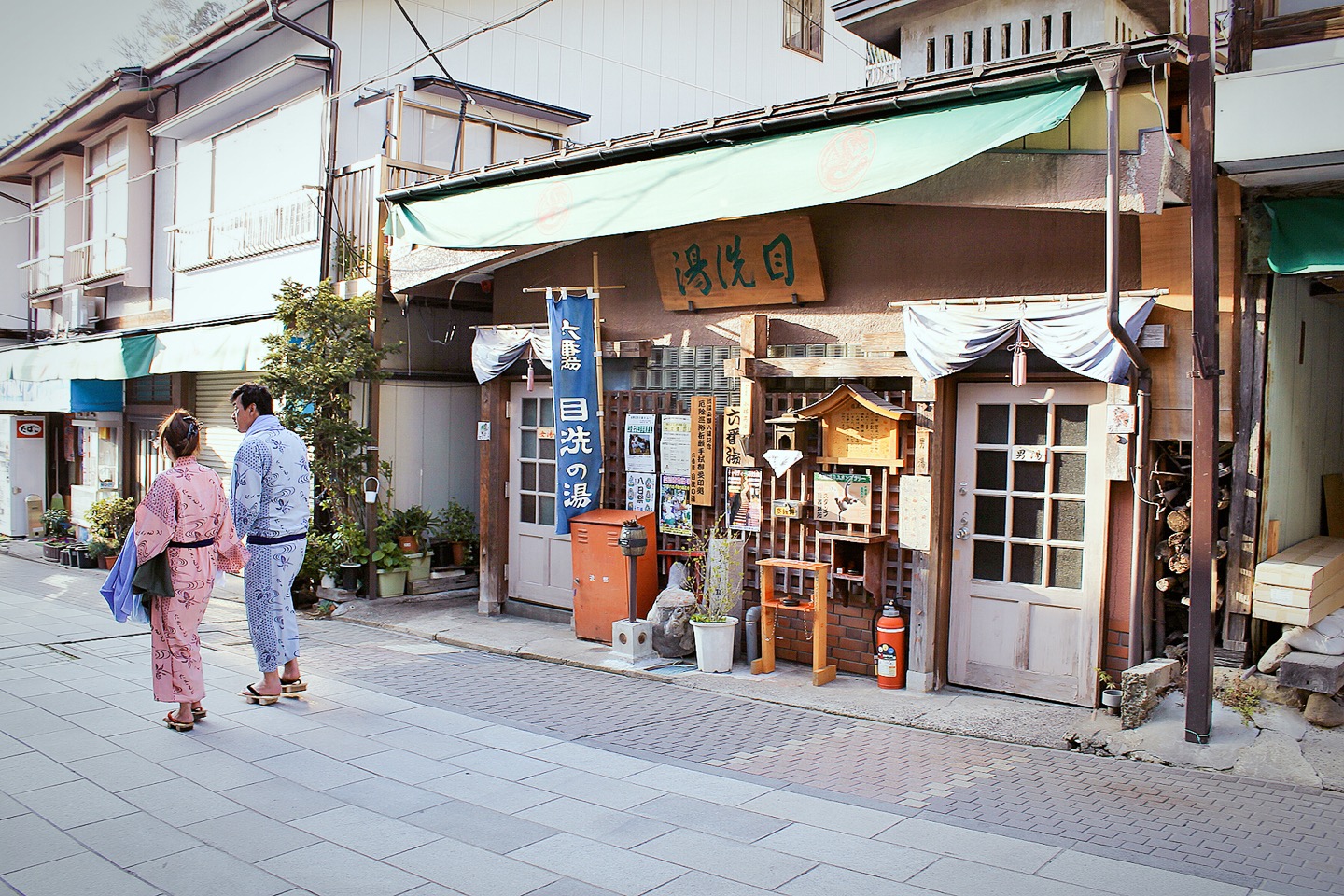Every now and then you arrive somewhere that is so completely different from your version of normal that any kind of similarity is hard to draw. Shibu Onsen is one of those places, where it feels like you’ve not only been transported to a different culture, but a different era. This timeless town has been settled by the Yoyoku River since the 1300s. History says that the healing waters were first discovered by monks, and later samurai would travel here to heal from their battle wounds. The secluded feel of the town arises from the fact that is, in fact, secluded. To journey here it’s a two hour Shinkansen ride from Tokyo to Nagano, followed by a local train to Yudanaka and finally, a short shuttle to Shibu Onsen.

Every trip to Japan should include a stay in a traditional Ryokan. An overnight sleep here would elevate your experience and literally gives you the keys to places that visitors cannot access. Stay at Senshinkan Matsuya, where you will be warmly welcomed by Tomomi and Keiko upon arrival with tea. Settle into your tatami matted room, where the low table will later magically disappear and be replaced with futons to sleep on. The futons are surprisingly comfortable, the strangest adjustment for a Westerner, being the lumpy bean-filled pillows.


Your ryokan stay will typically include a kaiseki dinner, a artfully arranged collection of small dishes. It is quite thrilling to open up the individual lidded pots to discover what delicious treasure is hidden inside. At Matsuya we enjoyed miso soup, soba noodles, tempura vegetable, teriyaki salmon, raw white fish, pickled vegetables, and a mizumono (seasonal dessert) alongside plum wine. Kaiseki is often an expression of season and place, thus one of our many dishes were strangely shaped Kogami mountain vegetables, something that we had never before encountered. What really shone through is the intent to make guests feel special and at home, through heartfelt hospitality.


Your hosts will also supply you with a yukata, wooden geta sandles, and a master key, which readies you to explore the town. It’s perfectly acceptable to wander the streets in yukata, which is all a part of the town’s charm. But what draws visitors here are the sotoyu, the 9 public baths dotted around the town, each with a healing property. Spend your evening onsen hopping, with the promise of good fortune and health bestowed on anyone who bathes in all 9. You can purchase a tenugui (towel) to collect a souvenir stamp at each. Get comfortable with the uncomfortable, custom is to bathe nude, in public but gender separated onsens. Our intended tactic was to get into the water quickly, but be warned that the water is incredibly hot (starting at 42 degrees) – it takes added cold water and time to adjust. If your tummy rumbles a little early, you might pick up an onsen-tamago which is an egg that had been boiled in hot spring water. These are often found in baskets under running water on the street, which you can purchase on an honour based system.




Humans aren’t the only ones enjoying the natural hot springs. The Nagano snow monkeys also like a dip and you can visit them at the nearby Jigokudani Yaen-Koen. In Spring, they’re a little less keen on swimming, but the silver Iining was a fresh batch of adorable baby monkeys. The monkeys, with their expressive red faces, are fascinating to observe. We had a touching experience when we found ourselves stranded without a return bus. A Japanese family with a clearly full car took us back down to the town, settling their young children on our laps, whilst the eldest practised his English. And as our train left Yudanaka for Tokyo, we spotted them again, their little faces and excited waves farewelling us and warming our hearts.







